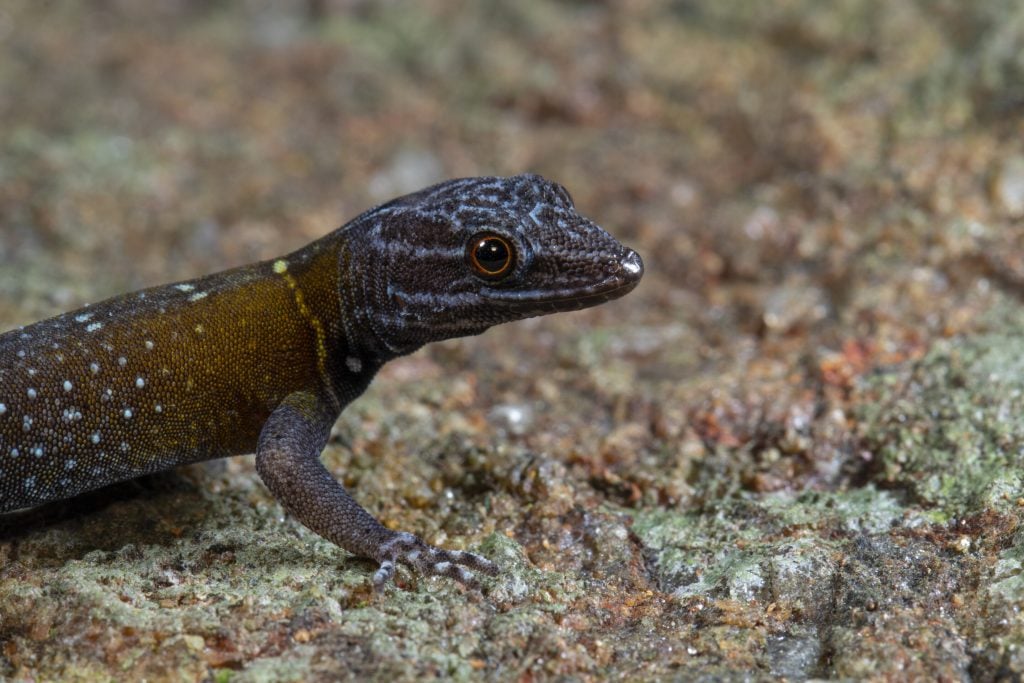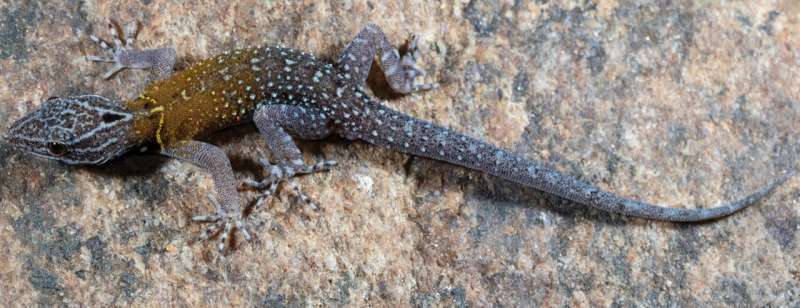Art World
A Newly Discovered Species of Gecko Now Shares a Name With Van Gogh
The creature, native to India, has a skin pattern reminiscent of the painter's “Starry Night.”

Researchers from the Thackeray Wildlife Foundation in Mumbai were conducting an expedition through the South Western Ghats ecoregion in Tamil Nadu, India, when they stumbled upon a new species of gecko. Because the unique pattern on its skin reminded the researchers of Vincent van Gogh’s painting The Starry Night (1889), they have christened the creature Cnemaspis vangoghi in honor of the Dutch artist.
The expedition, which took place in 2022, also led to the discovery of another species of gecko named Cnemaspis sathuragiriensis, after the Sathuragiri Hills, a pilgrimage site in the region. The team, comprised of Akshay Khandekar, Tejas Thackeray, and Ishan Agarwal, published their findings in a March 2024 edition of the peer-reviewed scientific journal ZooKeys.
Taxonomic names for animals consist of two components: genus and species. The genus Cnemaspis, one of the most diverse branches in the gecko-section of the evolutionary tree, covers more than 100 species of diurnal (daytime) geckos distributed across the continent of Asia, including, as of March 2024, vangoghi and sathuragiriensis.

Cnemaspis vangoghi, adult male. Photo: Akshay Khandekar, ZooKeys (2024).
The researchers found several specimen of Cnemaspis vangoghi on their expedition, giving them an impression of the species’ characteristics and living conditions. According to the research paper, the gecko can reach close to 1.4 inches in length and live over 1,300 feet above sea level. Though they are diurnal, they seem to be most active during the early morning and evening, when temperatures cool, and are commonly found on rocks and trees.
Conversely, The Starry Night is a nocturnal being. The canvas emerged from Van Gogh’s bid to capture the night sky as he saw it from the Saint-Paul-de-Mausole asylum near Saint-Rémy-de-Provence in France, where he was recovering from a mental breakdown. His “study of night,” as he wrote to his brother Theo, combined the artist’s observations as much as his imagination. The composition of evocative swirls and contrasting colors would become one of Van Gogh’s most well-known works—recreated in merchandise from mugs to Lego sets—and now hangs in the Museum of Modern Art in New York.

Vincent van Gogh, The Starry Night (1889). Collection of the Museum of Modern Art, New York.
Cnemaspis vangoghi is hardly the only species to be named after a famous artist. Cannopilus picassoi, a species of algae discovered in 1961, was named after Pablo Picasso. Leonardo da Vinci lives on through a type of yeast, Blastobotrys davincii, and there is even an animal named after martial artist and actor Jackie Chan: Acrotaphus jackiechani, a wasp. More recently, a species of ancient amphibian, Kermitops gratus, was named after Kermit the Frog.
The expedition that led to the discovery of Cnemaspis vangoghi is still ongoing. “Tamil Nadu is an exceptionally biodiverse state and we expect to name well over 50 new species of lizards by the time we are done,” Ishan Agarwal said in a press release.





